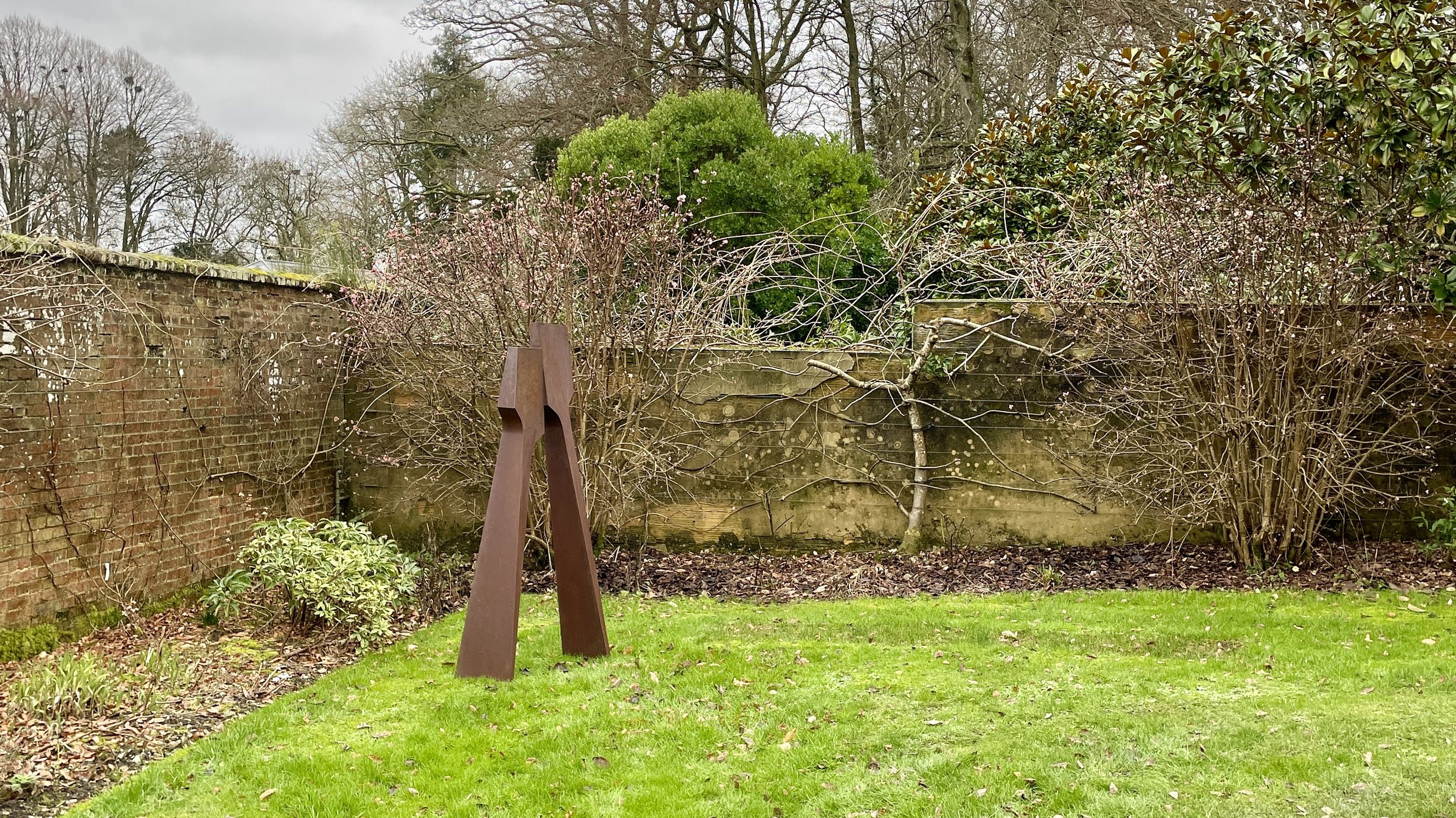Material Matters - Corten Steel
Beverly Pepper
Medea, 2019-2021
Corten Steel
366 x 384 x 190 cm
12ft x 12ft 7 x 6ft 3 in.
Base plate: 2 x 240 × 200 cm / ¾ x 94 ½ x 78 ¾ in.
Cast 2 from an edition of 4
Corten steel is widely used by contemporary sculptors across the world. Some famous examples include Antony Gormley’s Angel of the North, and The Picasso in Chicago, Illinois. It is appealing due to its distressed antique appearance, which develops as the steel is exposed to the elements. Due to the material’s high copper content, the surface forms a natural red/brown patina that is both attractive and protective.
Corten steel, also known as Cor-Ten or weathering steel, was developed originally in the United States in the early 20th century. When exposed to weather, the steel formed its own stable rust that eliminated the need for repeated protective painting. The alloy was commercialised in 1933, and was primarily used for railroad hopper cars in the handling of heavy bulk loads like mineral products and coal.
Many Corten steel sculptures are fit to be sited outside, as the colour creates a striking contrast in both natural gardens and urban landscapes.
Steel for Sculpture
Pictured left:
Beverly Pepper, Medea (2019-2021) Corten steel
In the early 1960s, modern artists began using this tough and industrial material in their art. Sculptor, Beverly Pepper is one such example of this.
During this time, Beverly Pepper was experiencing a shift in her artistic practice, wherein she started to move from wood carving to sculpting with polished stainless steel. This led to her spending a lot of time making work in industrial factories and steelworks. In the 1960s when Pepper was working at a US steel factory in Conshohocken, Pennsylvania, she was given Corten steel to work with for the first time.
In 2009, Pepper told the Smithsonian Archives of American Art’s oral history project (see here), “I was, in fact, one of the first artists, if not the first, to incorporate Corten steel into sculpture, as early as 1964).
Pepper’s breathtaking Corten steel sculpture, Medea, is currently sited in the Sculpture Park.
Matthew Hilton
Lean, 2023
Corten steel
200 x 80 x 55 cm
6ft 6 x 2 ft 7 ⅖ x 1ft 9 ⅗ in.
Edition 1 of 3
Recently, we were delighted to install a new work in the park; Matthew Hilton’s Lean.
Currently on show in our Design House garden, Lean is constructed from welded Corten steel. The red rust patina and salient, industrial form, creates a superb distinction in the garden.
Lean was recently a part of Hilton’s first solo exhibition of sculpture titled Tough Moment at Paul Smith’s flag-ship showroom on London’s Albermarle Street. The exhibition consisted of works that reflect the tough and vigorous environments of industrial factories, through using various materials that included stainless steel, granite, and Corten steel. The works in both their form and materials recall parts of industrial machinery, digital instruments, and work tools.
Another work sited in the park that showcases the beauty of Corten steel as a material is Greg Johns’ Transfigure.
Greg Johns is an Australian sculptor, and his native landscape has been a major influence in his practice. Concepts and forms in his work are inspired by a wide variety of influences, including Australian folk stories, fractals, nature, sacred geometry, and the human form. However, after over 40 years of practice, a layering of ideas has gradually unfolded and evolved, and these concepts continue to be deeply rooted in the landscape of his home country.
The rust-red profiles of his preferred medium, Corten steel, speak of the ranges, the deserts, and the shores which visually define so much of Australia, and allow for striking colour, material, and form, to emerge from the landscape.





